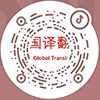Specific Solutions
Translating Public Signage: Clarity, Culture, and Responsibility
Public signage translation—also known as the translation of public notices, labels, instructions, and official information in public spaces—plays a unique and often underestimated role in cross-cultural communication. While the text may be brief, its impact can be profound, especially in multilingual cities, tourist destinations, transportation hubs, and government service areas.
Why Public Signage Translation Matters
The purpose of public signs is to inform, guide, warn, or regulate behavior—often in fast-paced or high-stakes environments. A mistranslated sign at an airport or hospital is not just an inconvenience; it could cause confusion, delay, or even danger.
Moreover, public signage is a reflection of how a city or institution treats non-native speakers. Clear, accurate, and respectful translation shows inclusion and professionalism. Poor or laughable translations, on the other hand, may damage credibility and reinforce stereotypes.
Key Challenges in Sign Translation
1. Limited Space, Unlimited Implications
Signs are short, but they carry weight. The translation must be brief but precise, often with no room for long explanations. This puts pressure on word choice, tone, and grammar.
2. Function Over Form
Unlike literary or academic texts, signage is functional. The goal isn’t elegance—it’s effectiveness. The translator must focus on what the reader needs to understand and do, not just what the source text says.
3. Cultural Sensitivity and Context
Some public phrases, especially regulatory or moralistic slogans, may sound awkward or overly rigid when translated literally. For example:
中文:“讲文明树新风”
直译:“Promote civility and foster a new social ethos”
更自然的译法或许是:“Be civil. Build a better community.”
Translators must evaluate whether a message needs to be **localized, rephrased


















